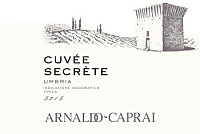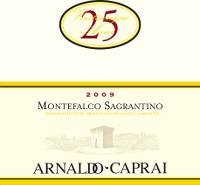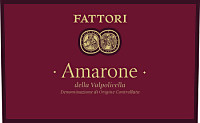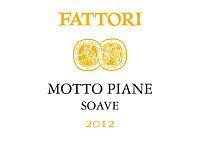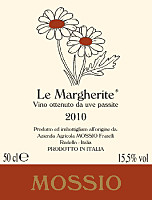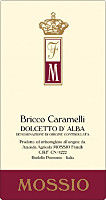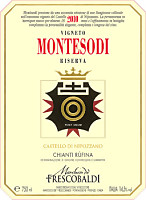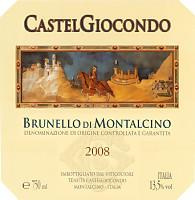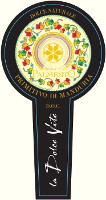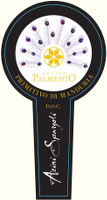|
Sensorial tasting of wine is a practice capable of giving emotions and
satisfaction, something certainly renewing at each bottle and at each glass.
Moreover, it is a practice requiring commitment, concentration and attention as
sometimes the taster can also need to evaluate difficult wines and not
easily understandable. Each wine, with no exception, offers a chance to improve
our tasting skills. This is also true for the wines tasted in the past as,
although this can be seen as exaggerated, each bottle of the same wine is
different from all the other ones. For this reason, sensorial tasting of wine
done with a critical and analytical goal cannot be done superficially. In
particular, every time a wine is being tasted - including in informal occasions
- it should be considered as a moment giving an opportunity of study.
On this regard, it should be noticed sensorial tasting done informally and in
places capable of influencing the perception of wine, should be considered in
function of the conditions. The presence of non properly favorable conditions
however allows the understanding of how certain elements are capable of
affecting and influencing the perception of a wine. Therefore, the tasting done
in not truly favorable conditions, however offers the tasters an opportunity of
study and improvement according to the influence of certain factors.
Unfortunately, in these cases the elements of study offered by a wine are
limited in function of conditioning factors and it will be the skill of the
taster to allow him or her to get the most out of the circumstance. In these
specific conditions it will however be possible to get some general and useful
elements for the evaluation of wine, properly filtered from disturbing factors.
The skill of taking advance of every occasion in which a wine is being tasted
is, as a matter of fact, an important factor allowing the improvement of our
skills. In fact, it is fundamental to continuously practice the task of
tasting. The analogy with an athlete is clearly appropriate: in order to get
better results he or she needs a continuous training, with commitment and
method. After all, we cannot expect to learn the practice of sensorial tasting
by simply reading books, magazine reports or wine reviews. Practice is
fundamental. What we read in books and magazines is however useful for learning
the theory and for comparing our own evaluations.
Learning wine making techniques and viticulture is fundamental in order to
improve our tasting skills. We cannot, in fact, analyze and evaluate a wine in
case we do not know how it is made, from vineyard to bottle. The study of
viticulture and enology in fact allows the understanding of how the many
techniques can influence the sensorial qualities of wine. Of course, we do not
need to have deep knowledge on these subjects, something being essential for
the ones cultivating a vineyard or making wine. The study of viticulture and
enology cannot however be superficial or elementary: the advantage of knowing
how certain results can be obtained in vineyard and in winery, and how they
interact in function of a wine, gives the taster a better understanding of what
has been poured in a glass.
|
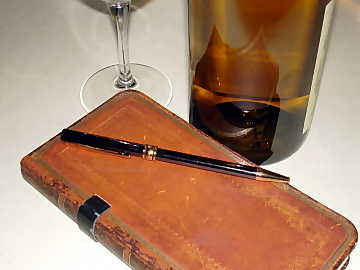 | |
| Taking notes of tastings it is
very useful for improving our skill | |
|
Knowing how a wine is made also gives an undeniable advantage for the
understanding of one of the most cunning aspects of sensorial evaluation:
faults. Being capable of recognizing wine faults certainly is one of the most
complex aspects and for which a taster usually does not pay much attention
during the study. Recognizing faults and knowing the factors causing them,
represent for the taster a superior advantage and skill. Not being capable of
doing so, the perception of a smell of which one is not capable of classifying
or identifying, leaves the taster in a complete uncertainty and this can
also affect the final result. Moreover, not being capable of recognizing faults
can also make the taster classify an obvious fault as a good quality, by
identifying it as a typical and positive characteristic of a wine.
For this reason, a taster should pay attention on the study and the recognition
of wine faults. Like already said in other occasions, a quality wine is - first
of all - a wine having the least possible number of faults. In case an evident
fault is perceived in a wine - and in case we are not tasting a series of wines
- it is good to concentrate on its study instead of rejecting that wine. The
same should not be done in case we are tasting a series of wines, as a wine
with an evident olfactory or gustatory fault could affect the perception and
the evaluation of the next ones. The circumstance is negligible in case of
faults in the appearance of wine. In case we cannot explain the causes of a
fault because our wine making and viticulture knowledge does not allow us to do
so, it is advised - in case we can do that - to ask an expert taster or wine
maker, in order to get another chance of study.
To recognize means, first of all, to know. You cannot, in fact, identify
something - both in positive or negative terms - if you don't know it. Besides
the useful predisposition for curiosity - every sensorial stimulus is an
important chance of study for every taster - we also need a very good
sensorial memory. This skill is particularly useful for the
identification of aromas, among the main aspects of sensorial evaluation in a
wine. The use of analogy for olfactory descriptors is a very common practice
during the tasting of a wine. It is in fact a useful simplification in order to
easily communicate and olfactory stimulus to everyone. Saying in a wine is
being perceived the aroma of black pepper is something understandable to
everyone and can be easily associated. Saying it is being perceived
rotundone - the sesquiterpene responsible for the aromas of black
pepper, found in certain wines produced with Syrah grape - is probably
incomprehensible to many.
Having a sensorial curiosity, that is to pay attention to sight, smell, taste
and touch stimuli, is a practice every taster should do all the time, in
particular in case of the perception of new and unknown stimuli. Likewise, the
perception of a known stimulus makes both a useful memory training and a chance
to perfect and widen the information associated to that stimulus. Let's
consider, for example, the smell of apple. If it is true the base mark allows
the immediate association to this fruit, it is also true not all the apples
have the same smell and, moreover, it can also change according to ripeness and
keeping. A green apple has a different smell from a russet apple, both
different from the aromas of a Fuji apple.
Another good habit every taster should have, certainly useful for the
improvement of his or her skills, is to take note of the tasting. For this
purpose can be used the evaluation forms used by professional wine associations
or we can also create a personal model based on criteria and methods useful
for the proper sensorial description of a wine. In case the taster prefer not
to use evaluation forms, another good way is to take note in a notebook in the
form and way the taster like the best. Tasting notes help the taster to
“remember” his or her impressions, while allowing the creation of a personal
database about this activity. This “database” is very useful in order to
remember sensorial qualities of wines also in function of the territory,
grapes, vintages and wine making techniques.
It is advised to classify and catalog tasting notes or evaluation forms in
order to allow a quicker and better browsing and search. On this regard, a
computer certainly is very useful, as well as a tablet or
smartphone, in particular in searching data, while allowing a quick
extraction of information and their comparison. In case it is not possible to
create a specific software for this purpose, it can also be used any database
software, or a simple word processor, by properly classifying the single forms
and notes. In this sense, the use of the computer is very useful in order to
search and compare wines having particular characteristics, therefore having a
good tool for studying and for training your memory.
The method adopted for sensorial tasting is essential in order to improve the
taster's skills. Concentration and attention are fundamental requisites in
order to ensure a reliable result of the evaluation, conditions mainly favored
by blind tasting. This is in fact the preferred method used for the taster
education and training, as the lack of identifying elements and factors will
force the taster to a higher concentration and attention. The so called unblind
tasting - unavoidable in certain cases - however offers chances of study,
although some aspects of the wine will be considered as predictable and
obvious, therefore considered superficially. No matter the case, it is always
advised to get the best profit out of the tasting condition, no matter the goal
and method.
Finally, one of the fundamental factors allowing the taster to efficiently do
its job certainly is represented by experience. A condition taking time and
commitment, in particular the awareness that you will always be learning
as every wine is different from any other one and, as such, it cannot be
considered superficially. In every wine will certainly be found known
characteristics and learned from previous tastings, we can recognize grape
varieties and specific wine making techniques, however it will always have a
personality different from every other wine. Improving our sensorial tasting
skills takes time, patience and commitment, in particular the awareness that -
in order to get good results - it is fundamental to persevere both in training
and practice.
|


